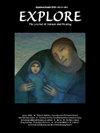灵气和穴位按摩对经皮冠状动脉介入治疗患者拔除股骨鞘时的疼痛、焦虑和生命体征的影响:随机对照研究
IF 1.9
4区 医学
Q3 INTEGRATIVE & COMPLEMENTARY MEDICINE
引用次数: 0
摘要
目的 本研究旨在确定灵气疗法和穴位按摩对经皮冠状动脉介入治疗患者拔除股导管鞘时的疼痛、焦虑和生命体征的影响。方法 本研究为前瞻性随机对照研究,共有 84 名患者参加,分别为灵气疗法组(28 人)、穴位按摩组(28 人)和对照组(28 人)。在拔出股导管前 20 分钟,灵气组在七个脉轮区域进行 18 分钟的灵气疗法,穴位按摩组在 LI4、HT7 和 PC6 穴位进行 20 分钟的穴位按摩。对照组接受标准护理。结果干预后,灵气组和穴位按摩组的疼痛和焦虑评分均显著低于对照组(P <0.05)。此外,在灵气疗法组和穴位按摩组干预后的测量中,心率和呼吸频率均明显低于对照组(p <0.05)。结论根据研究结果,在经皮冠状动脉介入治疗后拔除股骨鞘前应用灵气和穴位按摩可减轻疼痛和焦虑,并在一定程度上改善生命体征。本文章由计算机程序翻译,如有差异,请以英文原文为准。
The effect of reiki and acupressure on pain, anxiety and vital signs during femoral sheath removal in patients undergoing percutaneous coronary intervention: A randomized controlled study
Objective
This study was conducted to determine the effect of reiki and acupressure on pain, anxiety, and vital signs during femoral sheath removal in patients undergoing percutaneous coronary intervention.
Methods
The study, which was conducted as a prospective randomized controlled study, was carried out with 84 patients: reiki group (n = 28), acupressure group (n = 28), and control group (n = 28). Twenty minutes before the femoral catheter was extracted, 18 minutes of reiki was applied to the seven chakra regions in the reiki group, and 20 minutes of acupressure was applied to the LI4, HT7, and PC6 points in the acupressure group. The control group received standard care. All three groups were given the assessment with Visual Analog Scale, Spielberger State Anxiety Scale, and 5 minutes before & 5 minutes after sheath removal and vital sign data also collected at these time points.
Results
After the intervention, it was determined that the pain and anxiety scores of both the reiki and acupressure groups were significantly lower than the pain and anxiety scores of the control group (p < 0.05). In addition, heart rate and respiratory rates were significantly lower than the control groups in the measurements made after the intervention of both reiki and acupressure groups (p < 0.05). Systolic and diastolic blood pressures after acupressure, but not after reiki, were significantly lower compared to the control group.
Conclusions
According to the results of the study, reiki and acupressure applied before the removal of the femoral sheath after percutaneous coronary intervention reduce pain and anxiety and improve vital signs to some extent.
求助全文
通过发布文献求助,成功后即可免费获取论文全文。
去求助
来源期刊

Explore-The Journal of Science and Healing
医学-全科医学与补充医学
CiteScore
3.00
自引率
8.30%
发文量
179
审稿时长
25 days
期刊介绍:
EXPLORE: The Journal of Science & Healing addresses the scientific principles behind, and applications of, evidence-based healing practices from a wide variety of sources, including conventional, alternative, and cross-cultural medicine. It is an interdisciplinary journal that explores the healing arts, consciousness, spirituality, eco-environmental issues, and basic science as all these fields relate to health.
 求助内容:
求助内容: 应助结果提醒方式:
应助结果提醒方式:


